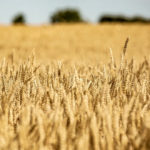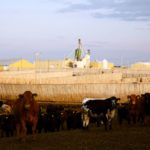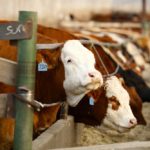Ontario corn and soybean prices are relatively unchanged from two weeks ago. However, winter wheat prices are down about 30 cents per bushel for old crop positions and 25 cents per bushel for new crop. Adverse logistical issues in the United States Gulf region have resulted in stronger wheat basis levels. While the wheat futures […] Read more
Tag Archives jerry klassen — page 25

Wheat prices dropping as world supplies hit backlog
U.S. soy acres are down, but low prices aren’t driving a deep decline

Klassen: Feeder market softens on adverse weather
Compared to last week, western Canadian feeder cattle prices were quite variable due to adverse weather. Rain and snow plagued much of the Prairies, which dictated buying behaviour. Yearlings traded within $5 on either side of unchanged; major feedlots focused on local cattle, which caused the Alberta markets to trade at a small premium to […] Read more

Klassen: Improving margins underpin feeder market
Compared to last week, western Canadian yearlings advanced $2-$5 while calves were unchanged to $3 higher. April live cattle futures are in a bull market; I’ve had many calls from producers and all I tell them is that April live cattle futures are in a bull market. Just as important, a market will not culminate […] Read more

Klassen: Feeder cattle market holding value
Compared to last week, western Canadian yearling prices were steady to as much as $4 higher while calf values traded within $5 on either side of unchanged. Current feedlot margins are hovering around break-even, but profitability will improve during October and November, given the recent strength in the deferred live cattle futures. Therefore, short-keep feeders […] Read more

Klassen: Feeder market waiting for direction
Average western Canadian feeder prices were relatively unchanged from week-ago levels; however, the yearling market in southern Alberta traded $3-$5 higher as feedlot operators focused on sourcing local cattle. High-quality yearlings are coming on the market and steady demand was evident across the Prairies. Strength in the deferred live cattle futures along with the deterioration […] Read more

Klassen: Strong demand drives yearlings higher
Compared to last week, western Canadian yearling markets traded $2-$3 higher, with quality packages advancing $4-$6. Feedlot operators shrugged off the weaker live cattle futures as feed grain prices came under pressure. Cattle brokers were carrying a full deck of orders, which allowed for limited slippage. Feedlots are anxious to secure ownership early in the […] Read more

Trade jitters dominate corn, soybean markets
Major players in crop markets are now taking trade disruption potential seriously
The grain and oilseed futures markets are digesting the trade war between Washington and Beijing. In part because of retaliation to the first round of U.S. tariffs, China will impose a 25 per cent tariff on U.S. soybeans and other agriculture products starting on July 6. President Donald Trump gave the approval to draw up […] Read more

Trade predicts fewer pulse acres, another canola record
CNS Canada — With the uncertainty regarding the pulse exports to India, it’s looking like 2018 could see more canola acres planted in Canada. Statistics Canada will release its Principal Field Crop Areas report on Friday (April 27). Last year saw Canada’s canola area at a record 23 million acres, but this year could again […] Read more

Klassen: Feeder market lacks demand in new tax year
Compared to last week, western Canadian feeder cattle traded $8-$10 lower while U.S. prices were also down $5-$10 from week-ago levels. The feeder market appeared to short-circuit after I thought the market was charged to move higher in last week’s report. Feedlot operators and cattle feeders saturated their demand prior to the New Year and […] Read more

Klassen: Feeder market ends 2017 on positive tone
Compared to last week, western Canadian feeder cattle markets traded $2 to as much as $6 higher. Moderate to stronger buying interest was noted across the Prairies. Once again, feedlot operators were fairly aggressive on quality yearling packages; semi-weaned and weaned calves were a solid $3-$5 higher while unweaned lighter calves experienced minimal price appreciation. […] Read more


